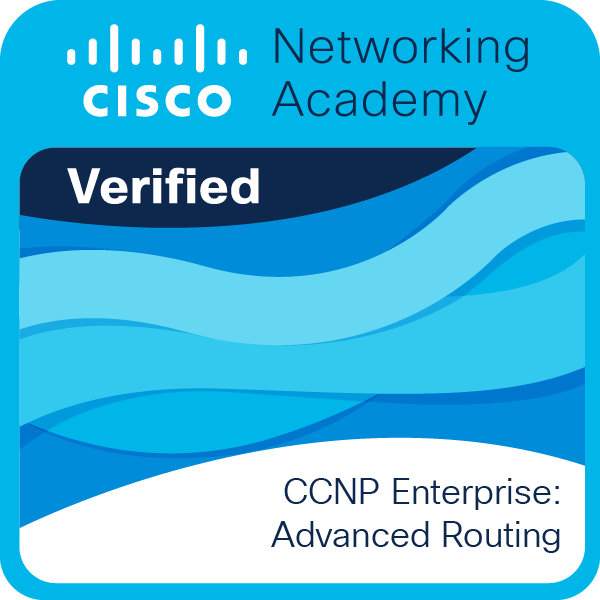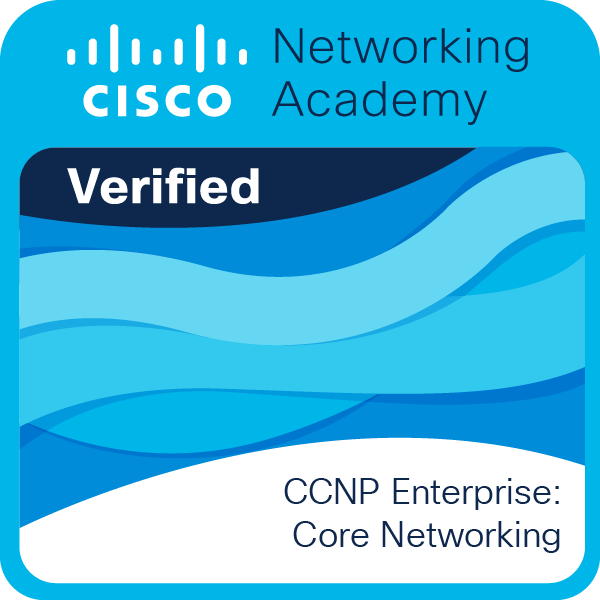- Cisco Community
- Technology and Support
- Networking
- Switching
- L3 Switching Commands
- Subscribe to RSS Feed
- Mark Topic as New
- Mark Topic as Read
- Float this Topic for Current User
- Bookmark
- Subscribe
- Mute
- Printer Friendly Page
- Mark as New
- Bookmark
- Subscribe
- Mute
- Subscribe to RSS Feed
- Permalink
- Report Inappropriate Content
05-20-2015 06:56 AM - edited 03-08-2019 12:05 AM
I am new to L3 switching and I have seen some interfaces on our switches setup in two different ways. Can someone please explain the commands below?
interface Vlan5
ip address 10.100.5.253 255.255.255.0
ip helper-address 10.100.5.50
ip ospf authentication message-digest
ip ospf message-digest-key 5 md5 7 14251D1E1801387A
standby 0 ip 10.100.5.1
standby 0 timers msec 250 msec 750
standby 0 priority 110
standby 0 preempt
interface Vlan111
ip address 10.100.111.254 255.255.255.0
ip helper-address 10.100.5.50
vrrp 10 ip 10.100.111.1
vrrp 10 timers learn
vrrp 10 priority 110
vrrp 10 authentication text vlan111
Solved! Go to Solution.
- Labels:
-
Other Switching
Accepted Solutions
- Mark as New
- Bookmark
- Subscribe
- Mute
- Subscribe to RSS Feed
- Permalink
- Report Inappropriate Content
05-20-2015 07:07 AM
The "ip helper-address .." command is for DHCP requests ie. any DHCP requests from clients in that vlan will be forwarded to 10.100.5.50 which is your DHCP server.
Note you don't actually need that command on the vlan 5 interface as that is the same IP subnet but you do need it on vlan 111.
The OSPF part is simply using authentication to peer with another L3 device so you need to tell it that plus give it a key.
The standby commands are for HSRP so there should be another L3 switch with a vlan 5 also with those commands and connected to this switch. Both switches share the virtual IP 10.100.5.1 but only one is active for it at any one time.
The clients have their default gateway set to the VIP so if the active switch fails then the other switch can take over and the clients can still use the same IP.
VRRP is another way of doing the same thing although why you are running HSRP and VRRP on the same switch I am not sure.
Jon
- Mark as New
- Bookmark
- Subscribe
- Mute
- Subscribe to RSS Feed
- Permalink
- Report Inappropriate Content
05-20-2015 07:03 AM
interface Vlan5
ip address 10.100.5.253 255.255.255.0
ip helper-address 10.100.5.50--------helper address to reach dhcp server off the subnet
ip ospf authentication message-digest ----OSPF neighbour authentication for security
ip ospf message-digest-key 5 md5 7 14251D1E1801387A----again authentication
standby 0 ip 10.100.5.1--------using HSRP redundency must be another connected switch thats it VIP address , running similar with vlan 5 so it can failover to it if there is an issue with this switch
standby 0 timers msec 250 msec 750--last 3 are more HSRP commands
standby 0 priority 110
standby 0 preempt
interface Vlan111
ip address 10.100.111.254 255.255.255.0
ip helper-address 10.100.5.50
vrrp 10 ip 10.100.111.1---vitual ip address will be the same on both switches participating
vrrp 10 timers learn -------This is another form of HSRP but open standard does the same thing provides redundency between vlans on diff switches
vrrp 10 priority 110
vrrp 10 authentication text vlan111
http://www.cisco.com/c/en/us/support/docs/ip/hot-standby-router-protocol-hsrp/9234-hsrpguidetoc.html
- Mark as New
- Bookmark
- Subscribe
- Mute
- Subscribe to RSS Feed
- Permalink
- Report Inappropriate Content
11-19-2015 04:48 PM
Thank you for this post about hsrp and links.
- Mark as New
- Bookmark
- Subscribe
- Mute
- Subscribe to RSS Feed
- Permalink
- Report Inappropriate Content
05-20-2015 07:07 AM
The "ip helper-address .." command is for DHCP requests ie. any DHCP requests from clients in that vlan will be forwarded to 10.100.5.50 which is your DHCP server.
Note you don't actually need that command on the vlan 5 interface as that is the same IP subnet but you do need it on vlan 111.
The OSPF part is simply using authentication to peer with another L3 device so you need to tell it that plus give it a key.
The standby commands are for HSRP so there should be another L3 switch with a vlan 5 also with those commands and connected to this switch. Both switches share the virtual IP 10.100.5.1 but only one is active for it at any one time.
The clients have their default gateway set to the VIP so if the active switch fails then the other switch can take over and the clients can still use the same IP.
VRRP is another way of doing the same thing although why you are running HSRP and VRRP on the same switch I am not sure.
Jon
Discover and save your favorite ideas. Come back to expert answers, step-by-step guides, recent topics, and more.
New here? Get started with these tips. How to use Community New member guide



